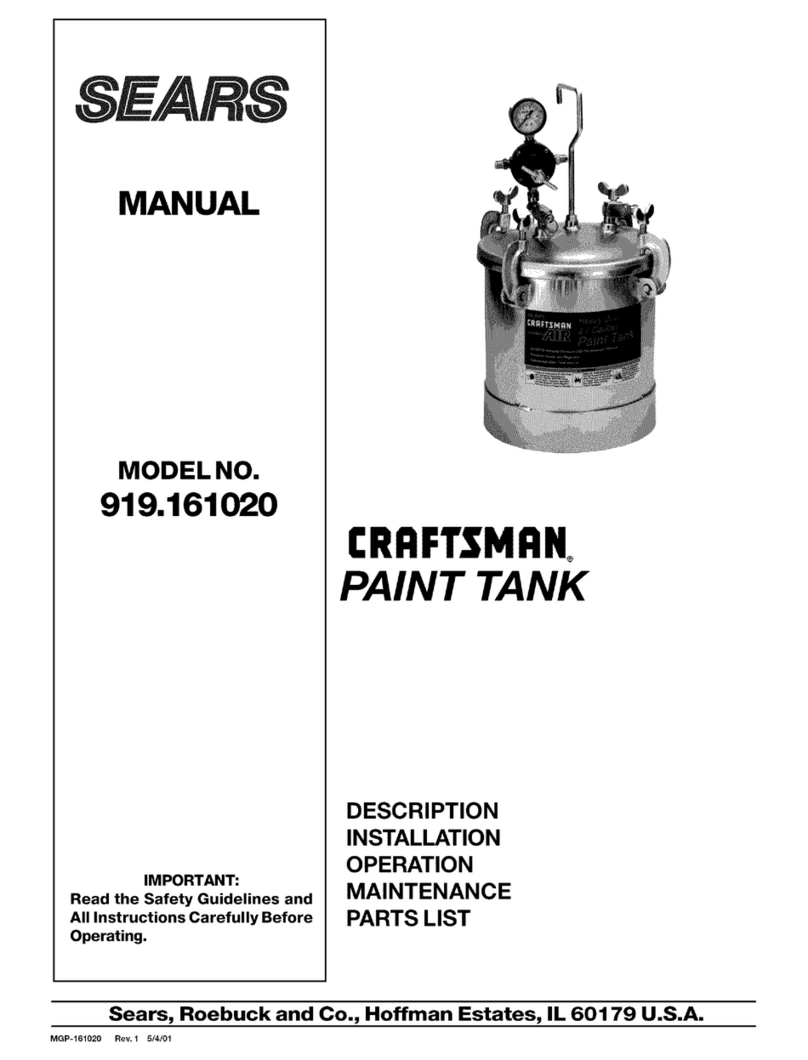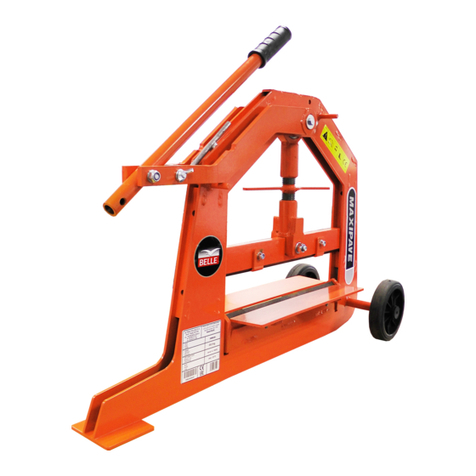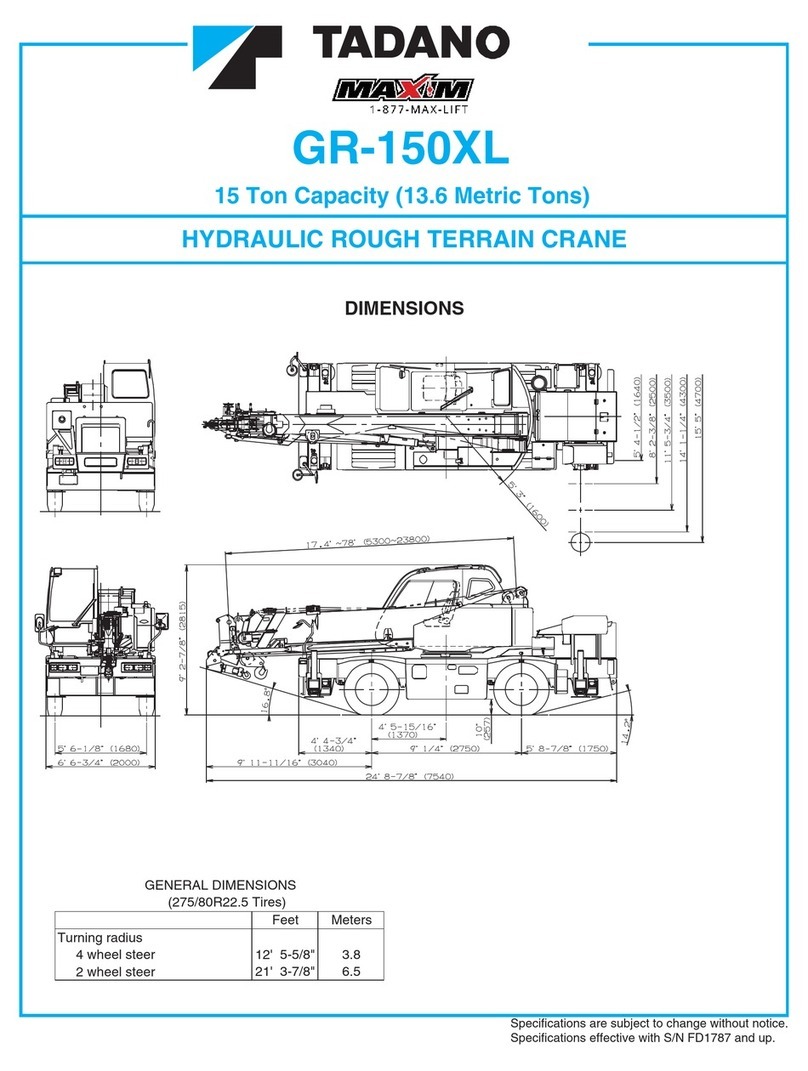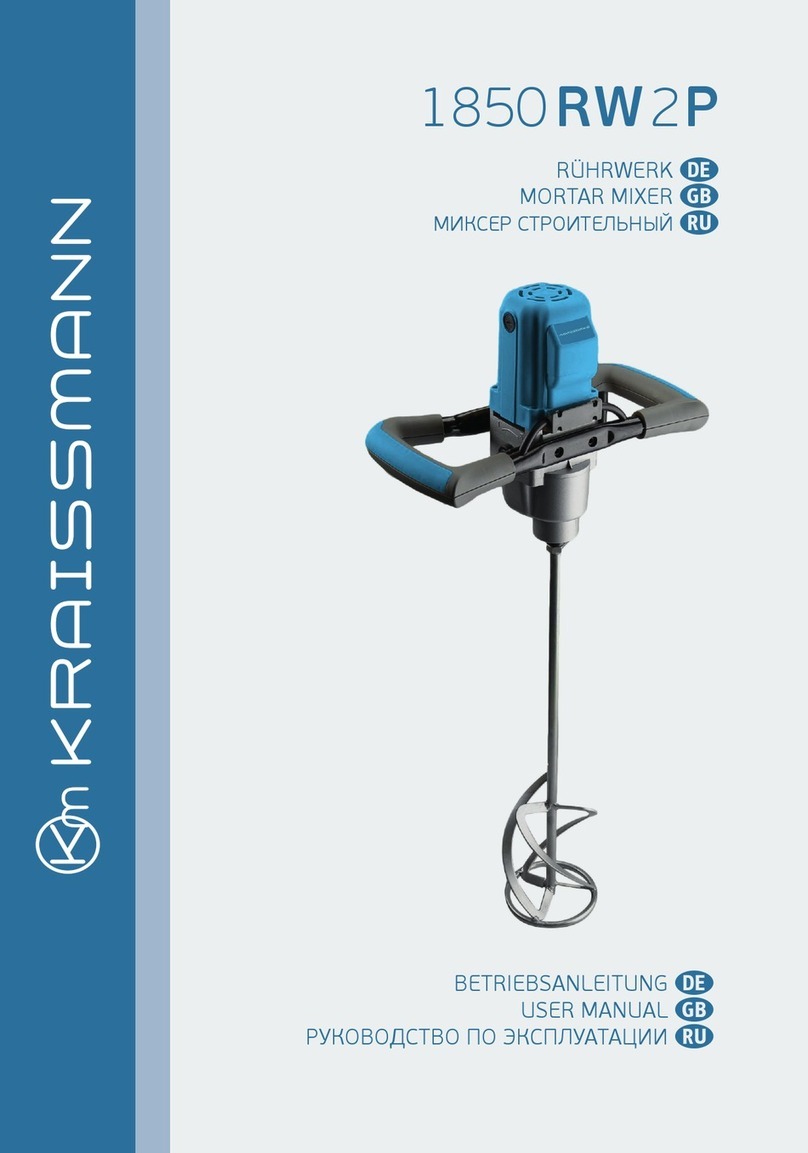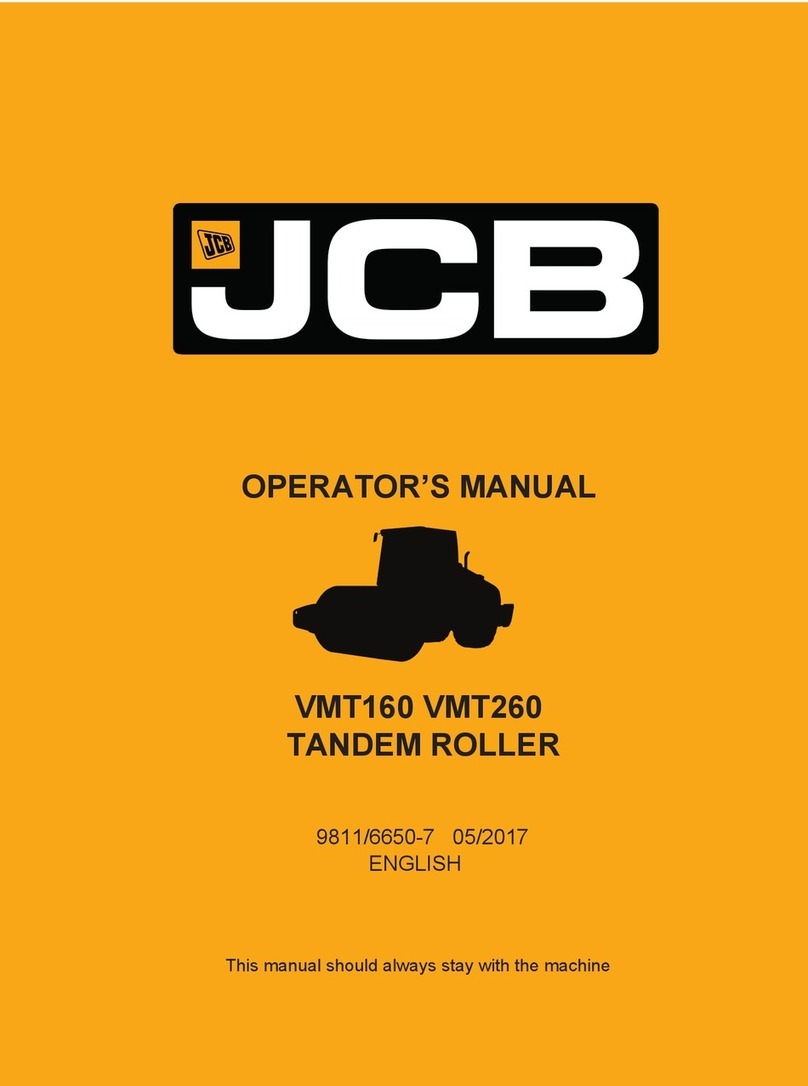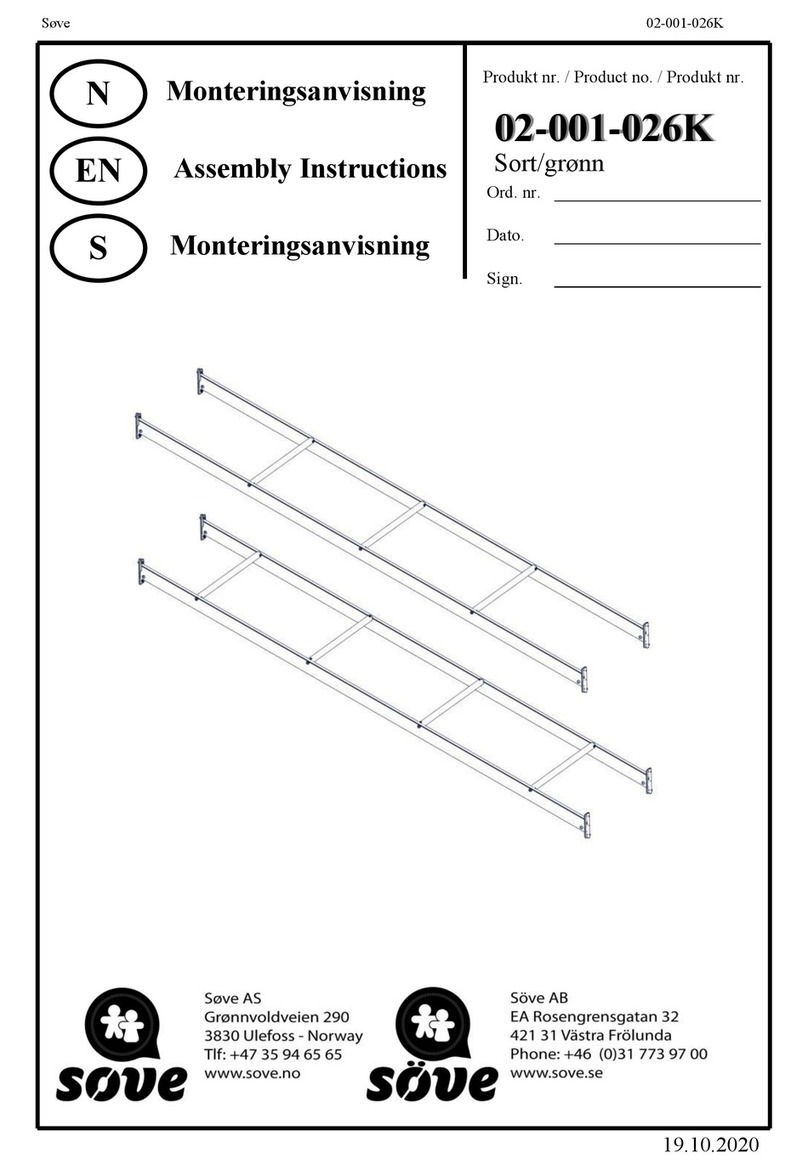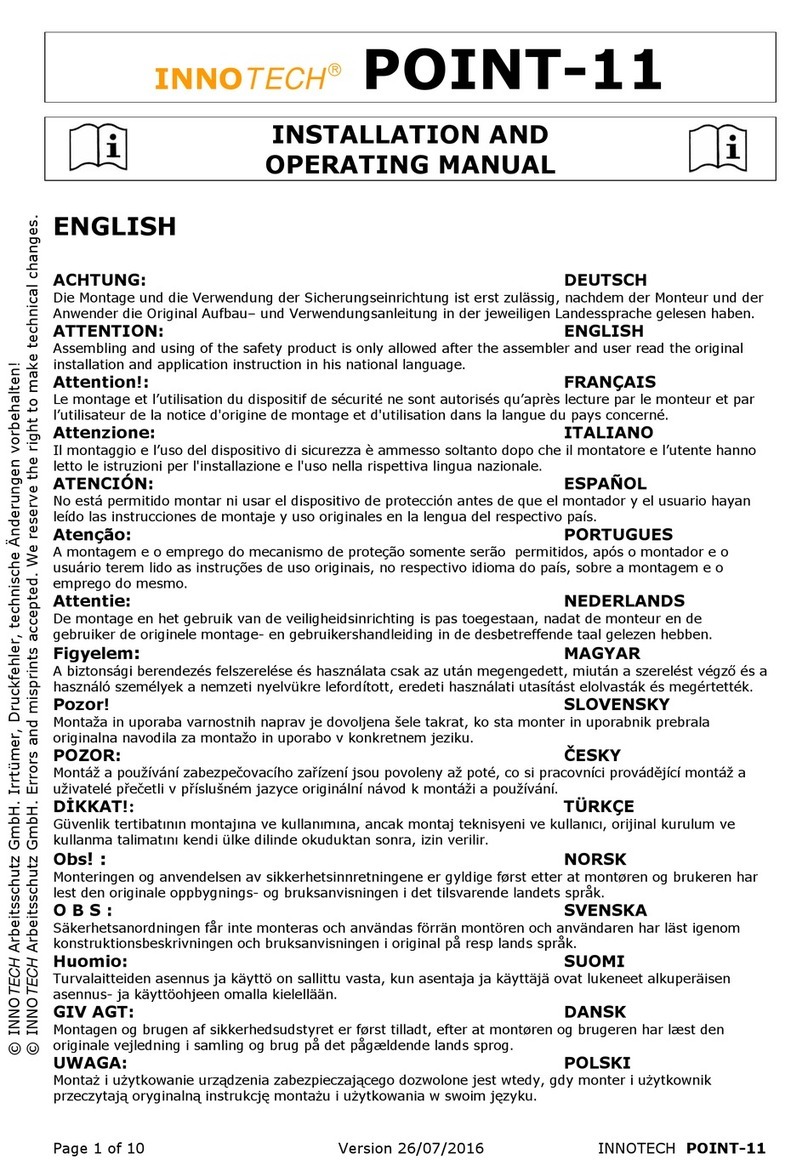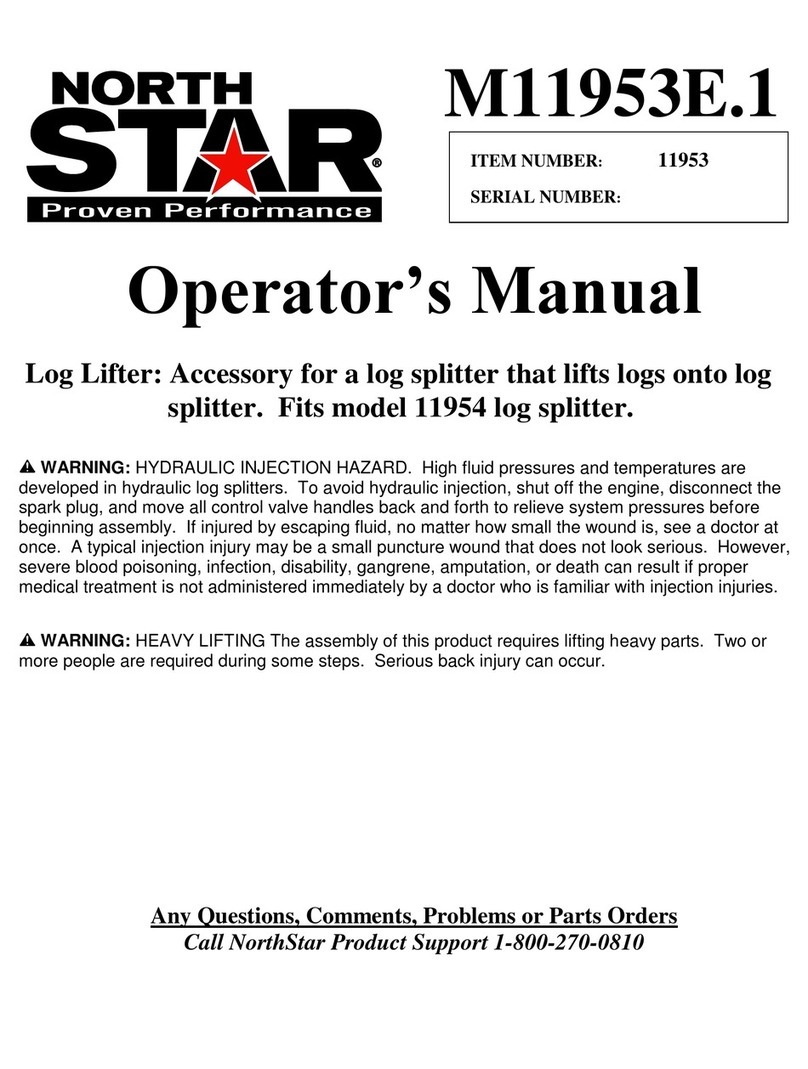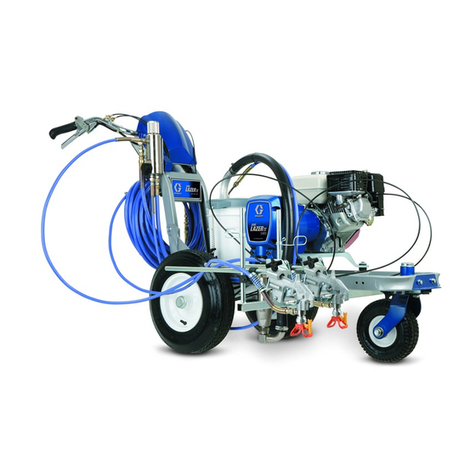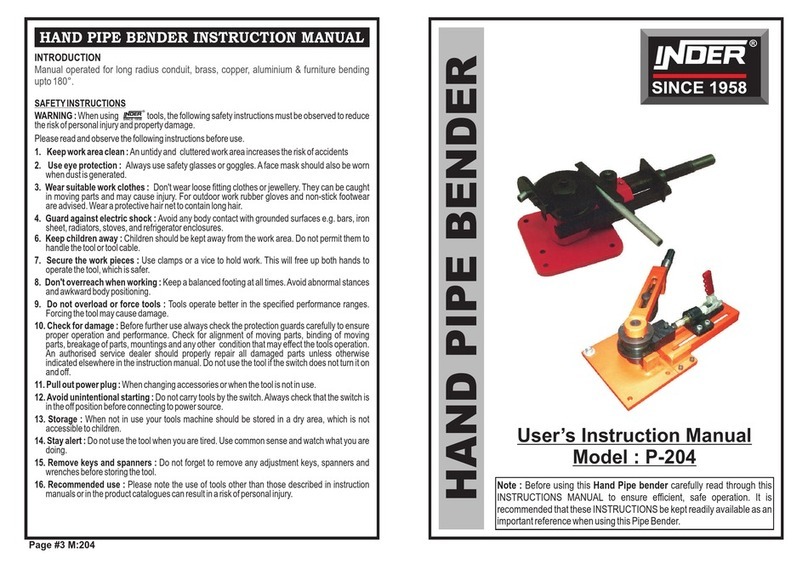SIXTY82 M29S LENGTH 300 Product information sheet

1
The new original
ORIGINAL USER MANUAL –PART 1
GENERAL REQUIREMENTS

2
NB! PART 1 is inseparable connected with
the applicable user manual PART 2
March 2019
Manufacturer:
SIXTY82 B.V.
Amperelaan 9
9207AM Drachten
The Netherlands
Phone +31 (0)88 1342200
Email info@sixty82.nl

3
Content
1. INTRODUCTION
2. SCOPE
3. IDENTIFICATION
4. LIMITATIONS OF USE
5. SAFETY INSTRUCTIONS
5.1 ELETRICAL POTENTIAL BONDING
6. TRANSPORT AND STORAGE
7. APPROVED ACCESSORIES
8. COATINGS AND SURFACE TREATMENTS
9. SLINGING METHODS
10. ASSEMBLY INSTRUCTIONS
10.1 ASSEMBLY
10.2 DISASSEMBLY
10.3 ATTACHING LOADS
11. INSPECTIONS
11.1 GENERAL
11.2 INSPECTION LEVELS
11.3 INSPECTION FREQUENCY
12. MAINTENANCE AND DISCARD CRITERIA
12.1 DISCARD AND REJECTION CRITERIA
12.2 GENERAL
12.3 MAIN CHORDS
12.4 BRACES
12.5 CONNECTORS
12.6 PINS
13. LEGISLATION
14. GUARANTEE
15. DISCLAIMER
16. CE DECLARATION OF CONFORMITY

4
1. INTRODUCTION
BEFORE using SIXTY82 truss, read this manual carefully and pay
attention to the information provided. Use this manual to
familiarise yourself with the products, its proper use and safety
regulations.
DANGER: Indicates a hazardous situation
which, if not avoided, will result in death or
serious injury. This signal word is to be limited
to the most extreme situations.
WARNING: Indicates a hazardous situation
which, if not avoided, could result in death or
serious injury.
Indicates a hazardous situation
which, if not avoided, could result in minor or
moderate injury.
NOTICE: address practices not related to
personal injury.
SAFETY NSTRUCTIONS: is used for a lists of
steps, procedures or instructions that might
otherwise substitute a DANGER, WARNING or
CAUTION notification.
This manual shall be inseparably used in conjunction with a PART
2 manual and vice versa. The PART 2 manuals contains product
specific requirements regarding legislation, set-up, dismantling,
allowable loading and any other information not referred to in
Part 1. PART 2 is always seperseding PART 1.
Make sure manuals are available at all times for all
users and all employees.
For the ease of reading, truss elements are referred to as
„trusses“.
2. SCOPE
The intended use of trusses is to be repeatedly assembled and
disassembled in order to carry loads in temporary or permanent
installations.
Trusses can be considered as lifting accessories or construction
products.
If used as lifting accessories, trusses are subjected to the
European Machine Directive 2006/42/EC. They are statically
tested with 1,5x the maximum load during its general approval
test
Trusses under the intended use are not subject to the scope of
the European Construction Products Regulation 305/2011/EC.
If the application does so, contact the manuafacturer for the
required CE Declaration of performance. NB! Due to the
requirements additional cost will be applicable to the product.
It shall be noted that it is the sole reponsibility of
the user to check with local authorities if the
legislation used by SIXTY82 is accepted in the
country of use.
3. IDENTIFICATION
SIXTY82 products can be recognised by the specific ID-tag on all
trusses as well as the embossed logo on each coupler.
To identify individual parts, see figure 3.1
B10102018001-
Fig. 3.1

5
Fig 3.2
Fig 3.2
4. LIMITATION OF USE
•Trusses must be used within
the limits of the structural
report.
•Loadingfigures mentioned are only valid for static loads.
•Self-weight is
already taken into account.
To meet BS, ANSI and EN standards for truss elements in
repetitive
use, all loadings as mentioned in the loading tables shall be
multiplied with 0.85.
All other structures made of truss need
dedicated structural
reports.
Some products within our range fit with those of other brands.
Nevertheless, trusses can differ considerably depending on their
design, layout and manufacture (e.g. material properties, alloy,
diameter, thicknes, layout of the bracing, system tolerances,
etc.) SIXTY82 provides comprehensive technical support and
structural data for all trusses.
The structural integrity of an assembled structure of different
brands and legal compliance is the sole responsibility of the user.
Their combined use must always be certified by a structural
engineer on a case by case basis.
SIXTY82 cannot accept responsibility for products manufactured
by third parties.
Trusses are not particularly designed for lifting
people!
Adequate load-reduction and safety
precautions, according to local legislation, must be
taken when
people are lifted.
Trusses can be used in environmental
conditions varying from -
20°C up to +80°C.
However, if trusses are used bellow 0°C special attention must be
taken. The open heel of the welds of some of our trusses and
capillary working of pin holes can cause water intrusion inside
the truss chords and diagonals. If temperatures are bellow 0°C,
captive water caused by intrusion or condensation will freeze
and can cause damage to the truss members.
To avoid this effect SIXTY82 can provide the same trusses with
100% circumferential welded diagonals as well as drainage
holes.
Special attention must be taken when trusses are used in
aggressive environments or its near
vicinity.Thealuminium alloys
used might not be particular suitable
for this environment.
Direct contact with concrete
shall be avoided by means of a
sealant. A special instruction form is available.
The alloy used has good properties in a salt water environment
however, it can cause oxidation on the surface. Regular cleaning
with fresh water or a dedicated protection is advised.
The material used for the connectors is especially vulnerable for
salt water. It is advised to anodise, coat or treat it with a sealant
in such a way that no salt water particles can contact the
material.
All bolts and nuts used in the line of forces, shall be
fastened by
meansofa torquewrench. Whenboltsare
connectedtothreaded
aluminiumcomponentsthetorque
settingare M12 >15Nm, M16
> 25Nm.
5. SAFETY INSTRUCTIONS
For health and safety reasons, people handling truss should wear
adequate Personal Protection Equipment like, but not limited to,
gloves, sound protection, hard heads and safety shoes.
The noise levels during
assembly and disassembly can exceed 80 dB.
Elements
weighting 20 kg or more shall be carried by at least 2
persons.
Persons whohaveto
be on the construction side shall be instructed
and informed about correct use and possible
dangersbefore use.
In case of an accident, damaged or malfunction, trusses shall be
marked, taken out of service and offered for inspection to a
qualified person in order to establish their structural integrity for
re-use. The trusses shall be identified accordingly, and records of
identification numbers and photo’s shall be kept.
Examples of accidents or malfunction can be:
•Truss is dropped to floor from height;
•Truss is lifted with missing pins in joints which might
cause overloading;
•Truss was subject to shock loads;
•Truss was torqued during e.g. lifting.

6
Always wear hard heads, safety shoes, sound
protection and protective gloves when moving,
sembling, disassembling or transporting truss
elements.
Assembled trusses and structures must be checked on their
structural stability and strength by a chartered engineer.
Do not mix structural data from different
standards without knowing their respective safety
principles like Load Resistance Factor Design or
Allowable Stess Design methodology.
Do not use of damaged or malfunctioning parts.
5.1 ELECTRICAL POTENTIAL BONDING
The user needs to ensure that truss systems that might
develop dangerous touch voltages in the event of an electrical
fault are incorporated into a common potential equalisation
system. This applies to all elements made of electro
conductive material which have equipment placed on, or
attached to, them or across which wires and cables run that,
in the event of damage, could make electrical contact with
metal parts. The connections can be made with clips, pipe
clamps, screw joints or special single-pole locking connectors.
The common potential equalisation system must be connected
to the earth wire of the electrical power supply system. For cable
lengths of up to 50 metres, 16 mm2Cu is considered the
standard value for an adequate cross-section. For cable lengths
of up to 100 metres, the standard value is 25 mm2Cu. In truss
tower systems, the potential equalisation connection can be
made by means of a potential equalisation connection point
provided by the manufacturer at the tower base. Since the
wheels or rollers used in tower systems with „sleeve blocks“
insulate the movable part of the truss construction, the latter
must be provided with a separate potential equalisation
connection.
Grounding trusses is extremely important as
very often audience and installers will come in
direct contact while the fixtures suspended are
electrically charged.
6. TRANSPORT AND STORAGE
Always wear hard heads, safety shoes, sound
protection and protective gloves when moving,
assembling, disassembling or transporting truss
elements.
Treat the truss with care. Don’t drop, drag or throw
them. Prevent damage from sharp edges such as
the forks
of a forklift. Use dedicated dollies as
means
for transportation and storage.
Avoid verticaltransportationor stocking for reasons of falling.
Avoid physical contact with unprotected steel at all
times.
Makesuretrusses cannotmove
or shakeduringtransport.Due to
the softness
of the aluminium the abrasive working of moving or
shaking can lead to severe damage.
7. APPROVED ACCESSORIES
For an
overview of approved accessories, we refer to our
brochure or our website: www.sixty82.com.
It is of great importance that accessories never damage
the truss.
Special
attention shall be taken at using clamps
and hooks. It
might very well be that their inside
radius does not
meet the tube size it needs to be
connected to. This can lead to severe damage.
8. COATINGS AND SURFACE
TREATMENTS
Coatings and surface finishes shall only be applied after
consultation with the coating or finish manufacturer or other
parties qualified to evaluate the possible effects of the coating
or surface finish on the structural properties and load - bearing
capabilities of the truss. Only use curing process of tempratures
of 200dgr or lower for per period of 10 minutes.
Records shall be kept detailing the application of any coating or
surface finish with particular attention to processes requiring the
application of heat.
Chemical removal of coatings and surface finishes shall be
carried out only after consulting with the chemical manufacturer
to ensure that the chemical will not affect the mechanical
properties of the aluminium.
The use of Abrasion-blasting shall be treated with great care. It
is adviced not to be used on aluminium less than or equal to 3
mm thick.
9. SLINGING METHODS
There are many ways of slinging a truss. At all times strength and
stability must be guaranteed. However, the correct way depends
on many aspects and the application.
Based on loading a truss to its maximum, it is advised
to sling trusses as per instruction given. These methods:
•Guarantee strength when attached in the node or
directly next to the end brace. (within 50mm)
•Guarantee that the hanging point is above the truss
centre of gravity
•Give redundancy in case one sling fails
•Minimise the horizontal compression of main chords
Slingingshallbeapplied solely at themain chords, not at
the couplers or internal braces unless approved by a
chartered engineer.
Slingingshallbeappliedatnodepoints,asideendbraces
or aside horizontal cross braces.
Slinging equipment shall be made from non-
abrasive and fire-retardant materials.

7
Pic. 9.1
Pic. 9.2
Pic. 9.7
Pic. 9.8
Ladder truss needs special attention for slinging.
Stabilisation of the top chord is vital for the load
capacity. Only the bottom chord shall be loaded.
Other load applications need structural analysis
before use.
Pic. 9.3
Pic. 9.4
Pic. 9.5
Pic. 9.6
Pic. 9.9
Pic. 9.10
Pic. 9.11
Pic. 9.12
Pic. 9.13
Pic. 9.14
Pic. 9.15
The use of slinging devices with a soft cover is advised. Direct
contact between a steel wire rope and the truss chord should be
avoided because of the abrasive surface of the steel wire rope.
For stability reasons it is advised to wrap at least 2 main
chords.
Trusses can be suspended from either the top or bottom
chords. The best method depends on the application.
Suspending or supporting has the same effect on a truss.
If the truss is not supported in the node point, the main
chords will be subject to an additional local bending moment.
This effect shall be considered in the structural analysis and
could lead to reduction of the load capacity!
For optimum performance, suspensions shall be attached
into the node points. If not, the truss might be subject to a
substantial reduction of its load capacity. Slinging to all main
chords doesn't change this. The correct load can only be
determined by studying each load case individually. This
should be done by a chartered engineer.
ADVICED SLINGING METHODS

8
Fig. 9.4
10. ASSEMBLY & DISASSEMBLY
INSTRUCTIONS
Trusses and truss constructions shall be assembled by some
competent person or sufficiently instructed personnel under
supervision of a competent person. Before assembly, use and
disassembly, the competent person is responsible for, but not
limited to:
•follow up of all instructions as stated in this manual
and the applicable Part 2.
•instruction to those assembling the trusses and correct
suspension of trusses and loads.
It is advised to physically show how to assemble and disassemble
trusses, how to orientate couplers and which tools to use.
Trusses with a conical coupler only allow the pin to be placed
from the outside inwards. Make sure that the conical hole in the
connector is correctly placed. The larger side of the hole need to
face outwards. See fig 10.1
Fig. 10.1 Fig. 10.2
When two trusses with conical connector are assembled a gap
between them can be seen. This is on purpose and has no
negative influence on strength and function. See fig 10.2
All bolts and nuts used in the line of forces, shall be
fastened by
means of a torque wrench. When bolts are
connected with
threaded aluminium components the torque
settings are M12 >
15Nm, M16 > 25Nm.
A competent person shall check prior to use if all trusses are
connected properly before applying loads.
For trusses with end braces it does not matter if the diagonals do
not follow the alternating zig-zag pattern.
Fig 10.4
10.1 ASSEMBLY
1. Slide two trusses towards each other.
2. Look if the pin holes are more or less alligned.
NB! With conical truss there is always a small difference in
allignment. This is done on purpose in order to maintain the
functionality of the conical connection system.
3. Guide the truss by its end in case the holes do not align.
Never use brute force.
4. Drive the pin through the pin holes preferably by using a
red-copper hammer. Rubber/ plastic hammers do not work
properly as they absorb to much energy.
Tip! Place the pin in such a way that the hole for the R-clip is
perpendicular to the length of the truss. This allows easy
mounting of the R-clip.
5. Put the R-clip in place.
6. Sling the truss by means of appropriate methods described.
7. Before loading, check if all connections are made.
8. Attach loads as per instruction given in chapter 8.3
9. Lift the truss 1 meter and check all connections. Correct
where needed.
10. Lift the truss to trim height. Avoid „bumping“ during the
lifting operation as it will lead to an increase of forces in the
truss and load.
10.2 DISASSEMBLY
1. Lower the truss till working height.
2. Remove the loads.
3. Inspect the truss for any default. Mark them accordingly
and take them out of service.
4. Lower the truss till floor level.
5. Detach the slings or lifting accessories.
6. Remove the R-clips.
7. Drive the pins out by means of a firm hit.
8. Check components on any default. Mark them accordingly
and take them out of service.
10.3 ATTACHING LOADS
Make sure:
Loads to be equally divided over both bottom or top chords.
Loading a truss on one side lead to internal torsional forces
which are not considered in the data provided.
Fig. 10.5
Fig 10.6

9
.
Fig 10.7
11. INSPECTION
SIXTY82 encourages careful documented inspection by
a
competent person at least once a year or as often if the
circumstances or intensity of use
requires so.
If the truss is used as lifting equipment, the inspection interval
should be according
to the machine directive (EC 2006/42) and
local
legislation or as often as needed
If the structural element is used as permanent load bearing
element in permanent buildings, they are subject to the EU
Construction Product Regulation 305/2011/EC.
The inspection interval
should be according to the building code
and local
legislationor as often as needed.
SIXTY82 trusses need to be checked and
inspected
visually for damage or any other aspect,
that might
negatively affect the safety, prior to each time of
use.
11.1 GENERAL
Responsibility and liability for the safe use of
truss elements, lies
predominantly with the user
itself.
The open heel in the bracing welds in the M29 and
M39
series are
part of the design and TÜV approved.
Inspectthetruss elements, rigging wearand
accessorieson visual
wear or damage of any kind
before assembling or using the truss
at
any time! For inspection criteria see Table 1.
Do not use damaged trusses, couplers and pins.
11.2 INSPECTION LEVELS
INITIAL INSPECTIONS
When first acquired, whether they are new or used,
structural
elements should be inspected in accordance
with Table 1, and a
record of the inspection
needs to be
maintained.
REGULAR INSPECTIONS
Regular visual inspections should be carried out in
accordance
with Table 1. Regular inspections should
be performed by a
competent person and should be
carried out prior to each
incident of use.
PERIODIC INSPECTIONS
Periodic visual inspections should be carried out in
accordance
with Table 1 and a record of the inspections needs to be
maintained. Periodic inspections should be performed
by a
competent person and should be conducted at least once each
year or in accordance with an
inspection routine established by a
qualifiedperson.
Trusses which are subject to any accident
must be inspected
according to the requirements per periodic inspection and in
accordancewithtable1.
11.3 INSPECTION FREQUENCY
TRUSSES IN REGULAR SERVICE
Trusses in regular service should be
subjected to regular and
periodic inspections.
PERMANENT INSTALLATIONS, STATIONARY
Periodic inspections should be carried out on all
trusses that are
permanently installed in a
stationary (not moving) configuration.
The frequency of inspections should be determined on the basis
of the
prevalent conditions.
PERMANENT INSTALLATIONS, MOVING
Periodic inspections should becarriedout every
three months, or
in accordance with an inspection
routine established by a
qualified person, on all
trusses that are installed in a permanent
configuration where movement of the truss system is an integral
part of use.
RECORDS
Records of initial inspections and periodic inspections
should be
kept by the owner for each truss and should be signed and dated
by the
personcarryingout the inspections.

10
12. MAINTENANCE AND DISCARD
CRITERIA INTRODUCTION
Apart from the normal requirements with regard due
to care in
utilization, professional assembly, dismantling,
transport and
storage of truss elements, regular
inspections are vital. A critical
visual check of the
individual elements before each use,
independent of
the respective field of utilization, shall be
performed.
Regular inspections of the trusses should be
carried out at least once
a year by a competent person and
documented in written form. If
thetrussis used intensively, regularinspections should be
performed
at shorter intervals. If deficiencies are
noted during an inspection of
the truss that
preclude further safe use, the truss must
be taken out
of service and scrapped. Identification of the deficiency cannot be
considered sufficient in
most cases. Disposal via the
manufacturer/supplier
or a metal recycling company is the only safe
way of
protecting othersfrom risks generated by defective
material.
The discard criteria provided by shall be incorporated fully into the
inspection.
Due to the fabrication, the trusses can have some dimensional
deviation from the theoretical dimensions given. These deviations
are within limits as given in EN 1090-3.
12.1 DISCARDANDREJECTIONCRITERIA
Trussesareconsideredtoberejected formserviceif they display one
or more of the criteria
mentioned inthis manual.
In case of doubt the manufacturer/supplier or an
expert
should be asked for their opinion.
12.2 GENERAL
Although aluminium may not develop corrosion the way many steel
alloys do ambient
influences can impact on aluminium corrosively.
Careshould be takenwith trusses thatare placed outdoors for a long
time, in particular in areas with a
high level of industrial pollution,
near salt water, near
tram lines, near swimming pools. Trusses
should be checked individually before each use as to
whether the
expected pollution has had a corrosive
effect.
If any part of a truss shows significant
visible damage
or is suspected of containing a
damaged element
(visible or not), the truss should be taken out of service
and marked
accordingly. A qualified person should
carry out an
assessment of the truss elements.
•
Repairs should be carried out and warranted by
either the
manufacturer or a suitably qualified
person to be approved by the
manufacturer.
•
Regularly smooth thesurface ofcoupling parts. Use a
finesandpaper
or conventional abrasive materials
•
Keep them slightly lubricated with oil, silicone spray
or similar
lubrication. Any lubricant used should not
be “sticky”, thus
preventing the gathering of dirt, dust
or small parts of debris.
•
Prevent painting the inner surface of the connector and pin holes
.
This has a negative
effect on the fit.
•
Remove any kind of debris from trusses and its components. Do not
use any abrasive
methods other than abrasive cloth or sandpaper
grain 240 or higher.
12.2.1 GENERAL discard criteria
•
Weldswhich have cracks or other irregularities.
•
Missing identification stickers (name of the manufacturer, type and
dateof production).
•
Lasting (3D) deformation of the stacking system parts by rotation,
bending or torsion or other deformation
with resultant deviation
from the original shape.
Fig. 9.1 Table 1
Part Initial Regular Periodic Chords Diagonals Connectors Welds Fasteners Geometry ID-TAG
Chapter 11.2 Chapter 11.2
Chapter 11.2
Missing parts
Dents
Bends
Holes (1)
Incorrect repair
Abrasion
Corrosion
Missing members
Flatness (2)
Deformation
Excessive wear
Cracks
Correct grading (3)
Twisting
Squareness
Bending
Sweep
Camber
Inspection level
Items to be inspected

11
Damaged or worn material shall be clearly marked
and immediate taken out of service.
12.3 MAIN CHORDS
If one or more main chord extrusions shows
cracks, or if one or more
main chord extrusions is
deformed
by more than 5% of their
respective diameter
from the original centre line , the truss is unfit
for further use. The same applies if the ends of the main chord of a
truss are
deformed inthe area around the connector, connecting the
truss to another element will only be possible by
exerting
considerableforce.
Further signs of a discard condition are:
•
Scratches, cuts or signs of attrition on the surface of
the
main extrusions that reduce the cross-sectional
area of
the tube.
•
Indentations in the main tube to a
depth of more than
1mm and a length of more than
10mm, irrespective in
whichdirection.
•
Holes which appear after the truss is brought into use.
•
The remaining (plastic) deformation of the main
chord to
an oval shape or indentation of the tube.
12.4 BRACES
If one or more diagonal braces, end braces or cross
braces are
broken or no longer exists, the truss is not usable. The same applies
for laterally displaced braces
ter from the
centre line. Further signs
of a discard condition are:
•
Scratches, cuts or signs of wear on the surface of the
braces that reduce the cross-sectional area of the
braces
by more than 10%.
•
Indentationsin the braces to a
depthof more than 0,5 mm
and a length of more
than 10 mm, irrespective in which
direction.
•
Holes which appear after the truss is
brought into use.
•
The remaining (plastic) deformation of a brace to an
oval
shape or indentation of the brace tube.
12.5 CONNECTORS
Signs of a discard condition are:
•
Cracked or partially broken welding seams between
the
main tube and the connector.
•
Oval signs of wear in the drill holes.
•
Rotational displacement for the drill holes for the bolt
holesin a connector orbetween two adjoining
connectors
by more than 2°.
•
Deflection of the main chord ends.
•
Signs of wear on the connector or the connector that
reduce the cross-sectional area.
•
Deformation or distortion in the main chord area
next to
the welds of the connector.
•
Overloadingby excessive force causes buckling.
•
Overloading through excessive tensile force can
cause
diminution of the main tube next to the welds.
•
Each scratch, cut or hammer stroke indentation
on the
connector to a depth of more than 1mm andthat is longer
than 10 mm, independent of the
direction.
•
Excessive corrosion in the connector.
For systems that have remained assembled for more
than one year
indoors or for 2 months outdoors,
new, galvanized bolts should be
used or stainless
-steel
versions in order to prevent possible
dangers by galvanic
corrosion.
12.6 PINS
Pinsundergowearwheninsertedandremoved
frequently,inparticular
by hammer strokes. They can
be regarded as consumer goods.
Pressure areas and deformations in the bolts are
indications of a
massiveoverload. If a bolt shows such a change, it may not be used any
longer.
Further signs of a discard condition:
•Cuts, indentations, scratches and other damages on
the
smooth surface of the pin.
•Burrs, mushroom heads and other protruding, sharp
or
pointed edges at the narrower end of the pin.
•Deformationthroughhammeringwhichcauses
•wear on the cross-hole or damage to a screw thread.
•Attrition of the zinc coating on any part of the bolt,
causing
this to corrode.
•No self-locking nuts may be used if the nylon safety
mechanism is clearly damaged by wear.
NEVER RE-ZINC PLATE STEEL PINS AS THEY ARE
MADE OF HIGH GRADE STEEL. HYDROGYNE
EMBRITTLEMENT MIGHT OCCUR.
13. LEGISLATION
For fabrication and use the following standards are applicable.
MANUFACTURING
EN 1990
Eurocode 0 Basis of structural design
EN 1991 all parts
Eurocode 1 Actions on structures
EN 1993 all parts
Eurocode 3 Design of steel structures
EN 1999 all parts
Eurocode 9 Design of Aluminium structures
EN 1090-1
Execution of steel and aluminium structures-part 1:
Requirements for conformity assessment of
structural components.
EN 1090-3
Execution aluminium structures: technical
requirements for aluminium structures.
ANSI E1.2-2006
Entertainment Technology: Design, Manufacture
and Use of Aluminium Trusses and Tower
EN 17115
Entertainment technology: Specifications for
design, manufacture of aluminium and steel trusses
EN 10042:2005
Arc welded joints in aluminium and its weldable
alloys - Guidance on quality levels for
imperfections.
EN ISO 3834-1 & 3
Quality requirements for welding - Fusion welding
of metallic materials - Part 1: Guidelines for
selection and use Part 3: Standard quality
requirements
EN 754 (all parts)
Aluminium and aluminium alloys - Cold drawn
rod/bar and tube
EN 755 (all parts)
Aluminium and aluminium alloys - Extruded
rod/bar, tube and profiles

12
EN 515:1993
Aluminium and aluminium alloys - Wrought
products - Temper designations
EN 573 (all parts)
Aluminium and aluminium alloys - Chemical
composition and form of wrought products
EN 10204:2004
Metallic products - Types of inspection documents
2006/42/EC
European Machine Directive
USE
BS 7906-2
Code of practice for use of aluminium and steel
trusses and towers / England
LOLER
Safe use of lifting equipment, lifting operations and
lifting equipment regulations / England
DGUV 17/ BGVc1
Staging and Production Facilities for the
Entertainment Industry/ Germany
IGVW SQP1
Code of practice for event technology- Provision
and Use of Truss Systems/ Germany
BS 7906-2
Code of practice for event technology- Provision
and Use of Truss Systems/ Germany
14. GUARANTEE
1. For a period of 12 month we undertake to repair, free of
charge any damage attributable to faulty materials or
workmanship, provided that the appliance is forwarded,
freight paid, to our works or one of the SIXTY82 contract
service organisations.
2. Extended warranty can be obtained by registering your
products at www.sixty82.com
3. The guarantee - period begins with the day of the delivery,
proven by a purchase receipt like an invoice or delivery note
or their copies.
4. The guarantee only is applicable for new equipment.
5. The guarantee does not cover damage due to transport
damage, negligent handling, overload or parts subject to
normal wear and tear. Nor damages that originate from a case
of misuse because of non-observance the instructions in this
manual.
6. The fitting of replacement parts not supplied by us or
modifications of our design by third parties also invalidates the
guarantee.
7. Guarantee repairs do not renew nor extend the guarantee-
period.
15. DISCLAIMER
Sixty82 has made every effort to ensure the accuracy of this
manual, no liability will be accepted for errors. Sixty82 reserves the
right to change or alter their products and documentation without
prior notice.
No part of this manual may be reproduced in any form or by any
means without written permission.
In case of a claim under the guarantee, a malfunction or spare part
requirements please contact your point of sale or Sixty82.
16. CE DECLARATION OF CONFORMITY

13
Table of contents
Popular Construction Equipment manuals by other brands

FastenMaster
FastenMaster FrameFAST FMTOOL-T2TP quick start guide
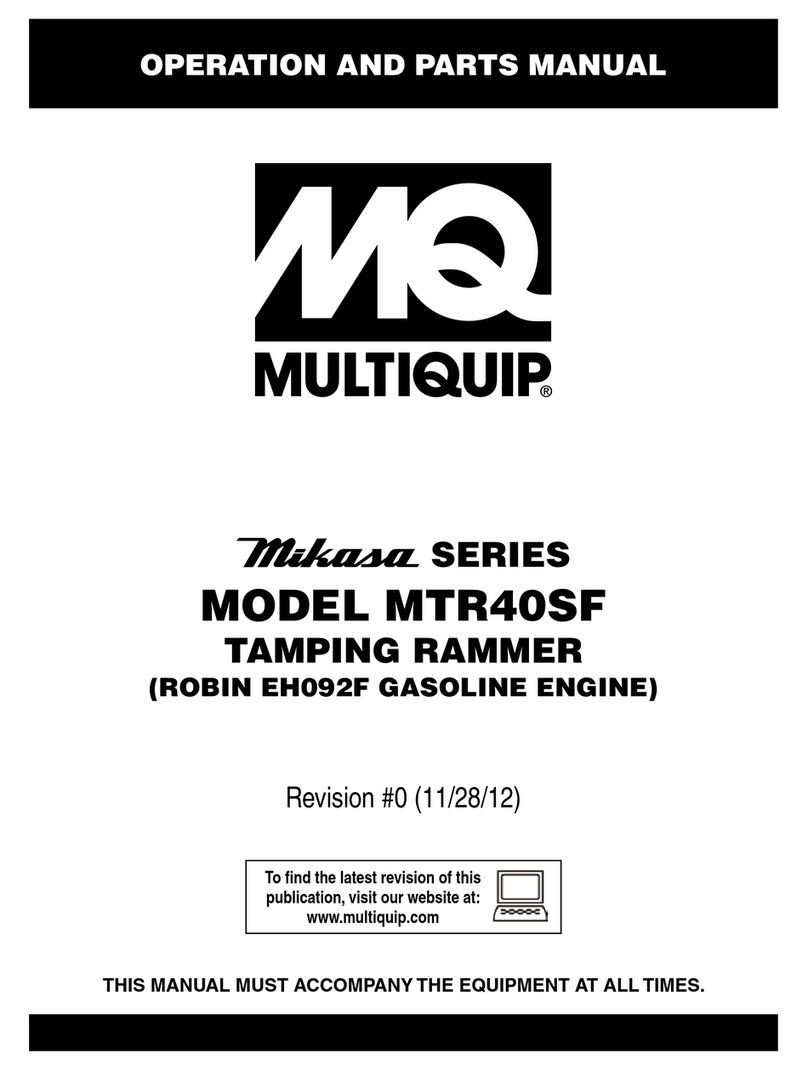
MULTIQUIP
MULTIQUIP Mikasa Series manual
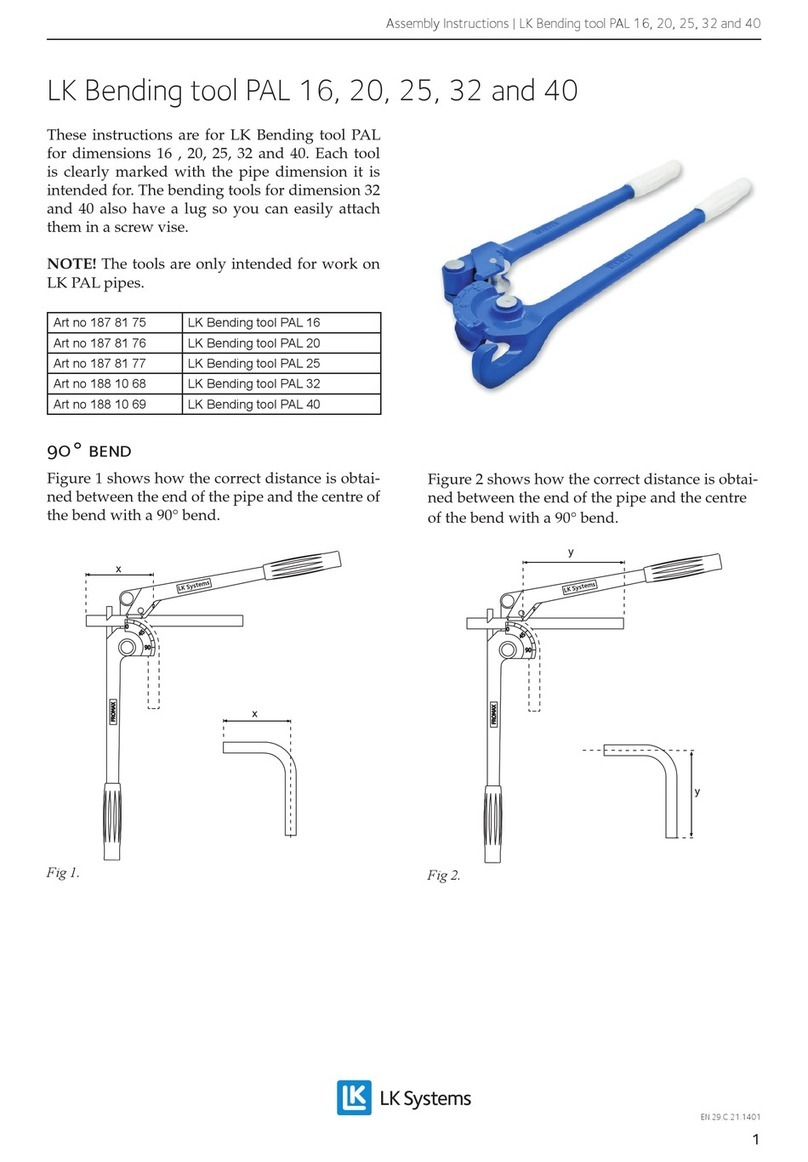
LK Systems
LK Systems PAL 16 Assembly instructions
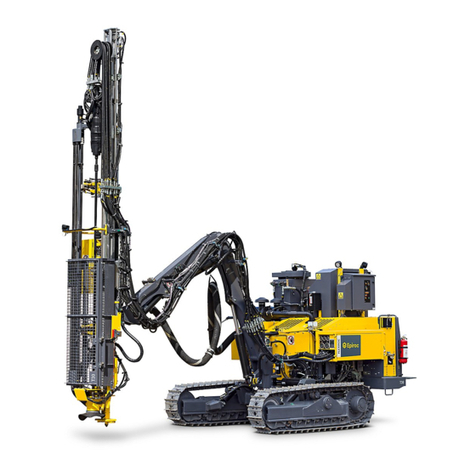
Atlas Copco
Atlas Copco FlexiROC T30 R Operation
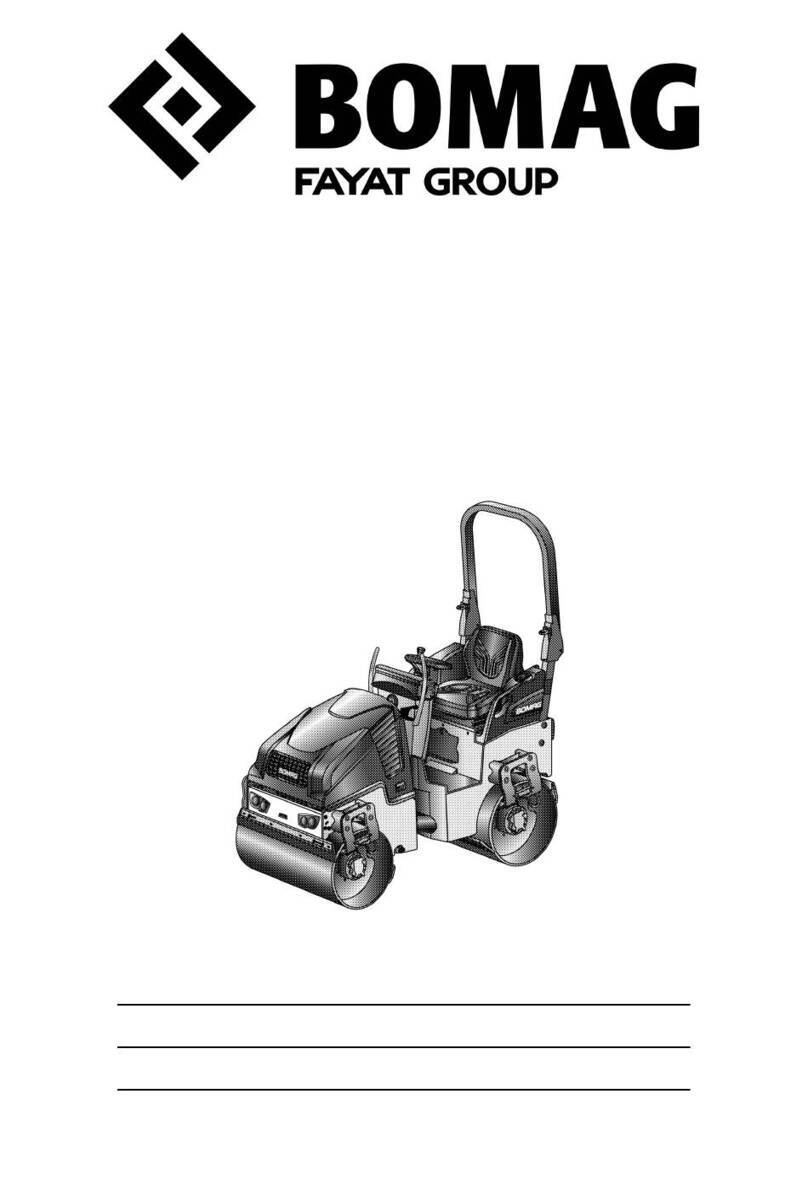
Fayat Group
Fayat Group BOMAG BW 80/90 AD-5 Service manual
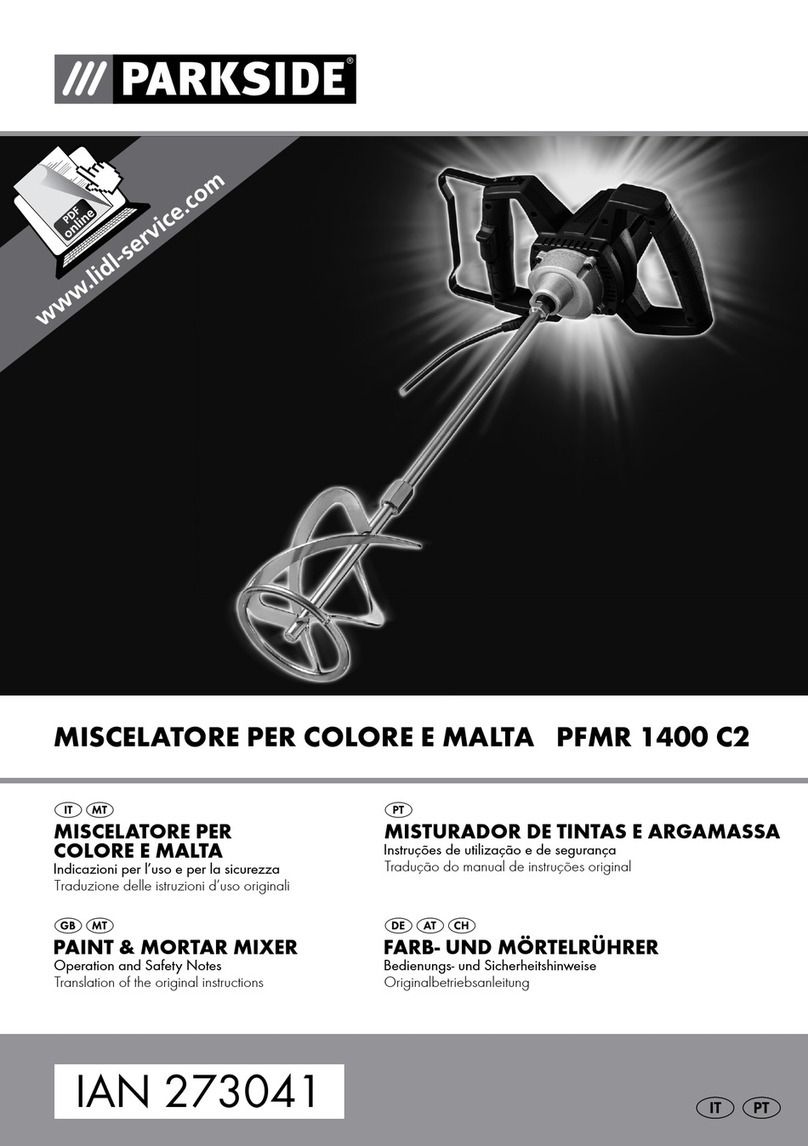
Parkside
Parkside PFMR 1400 C2 Operation and safety notes
